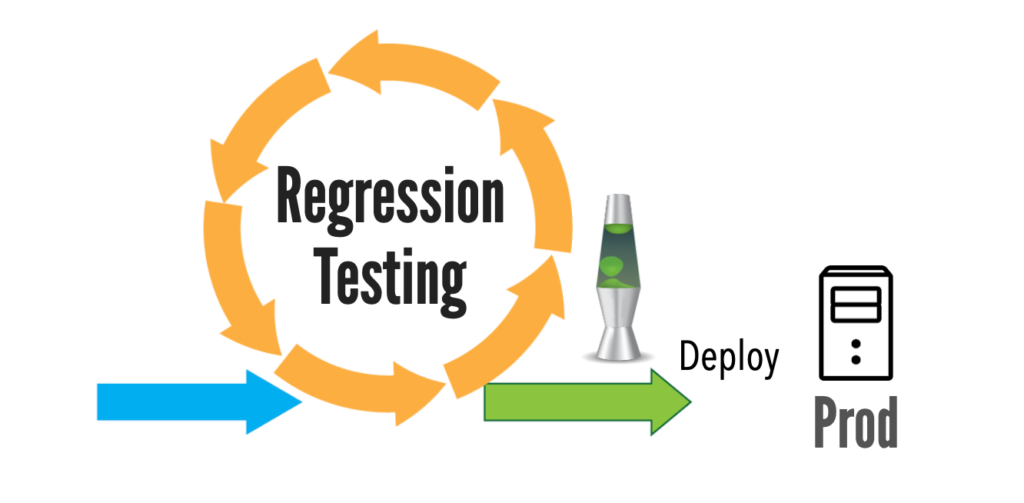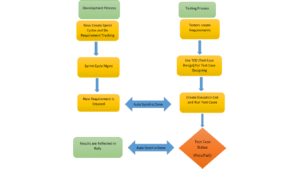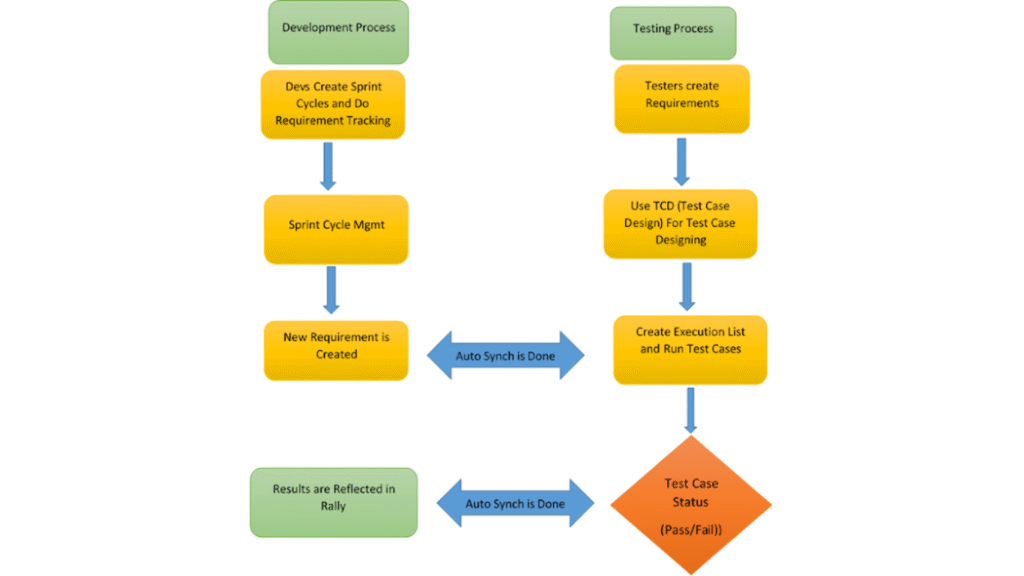Introduction
As the software development industry grows, the demand for skilled QA (Quality Assurance) professionals continues to rise. Experienced QA professionals are not only expected to have a strong foundation in testing methodologies but also the ability to apply these techniques to real-world scenarios. If you’re preparing for a Software Testing interview, scenario-based questions are a common challenge you’ll likely face.
Scenario-based interview questions test your ability to think critically, handle complex situations, and demonstrate your practical knowledge of software testing in real-world applications. In this blog post, we will walk you through common scenario-based software testing interview questions and provide detailed answers, helping you prepare effectively for your next QA software testing course interview.
We’ll also discuss how to gain a deeper understanding of QA concepts and prepare for QA software testing certification, which can be a valuable asset in your career growth.
Why Scenario-Based Questions Are Crucial
Hiring managers in QA software testing often rely on scenario-based questions to assess how candidates handle complex software testing challenges. These questions go beyond theoretical knowledge, focusing on practical experience and the ability to adapt to diverse project requirements.
Key Insights:
- Evaluate Problem-Solving Skills: Software Testing Scenario questions test how effectively you can identify, analyze, and resolve issues.
- Real-World Relevance: They highlight your ability to apply testing methodologies in real projects.
- Highlight Expertise: For experienced testers, these questions showcase your advanced understanding of tools, strategies, and processes.
Let’s dive into some of the most common Software Testing scenario-based questions and their detailed answers to help you prepare confidently.
Software Testing Interview Questions and Answers
Testing a Login Page
Question:
You are tasked with testing the login functionality of a web application. What are the critical test scenarios you would cover?
Answer:
To test the login functionality comprehensively, I would consider the following scenarios:
- Positive Test Scenarios:
- Login with valid username and password.
- Login after password recovery.
- Login with different browsers and devices.
- Negative Test Scenarios:
- Attempt login with an incorrect password.
- Use an invalid email format in the username field.
- Try logging in without filling in any fields.
- Boundary and Edge Cases:
- Test password field with minimum and maximum allowable characters.
- Test login with special characters in the username or password.
- Security Scenarios:
- Check for SQL injection vulnerabilities.
- Verify that passwords are encrypted during submission.
- Test multi-factor authentication if implemented.
Real-World Tip:
Employ automation for repetitive scenarios, especially when using QA Software testing tools such as Selenium or JMeter.
Handling a Critical Bug in Production
Question:
A critical bug affecting the checkout process was reported in production. How would you handle this situation?
Answer:
- Prioritize and Assess the Impact:
- Evaluate the severity and frequency of the issue.
- Identify affected users and systems.
- Reproduce the Bug:
- Use logs, screenshots, or error messages to replicate the issue in a test environment.
- Implement a Temporary Fix:
- Collaborate with developers to provide a hotfix or workaround to minimize user impact.
- Perform Root Cause Analysis:
- Investigate why the bug was not caught during testing.
- Review test cases, automation scripts, and scenarios for gaps.
- Validate and Deploy:
- Test the fix thoroughly in staging.
- Ensure regression testing covers related functionality.
Key Takeaway:
Software testing Highlighting my ability to communicate effectively with stakeholders while resolving issues promptly.”
Testing a Mobile App
Question:
You are responsible for testing a mobile app that integrates with GPS and payment systems. What key areas would you focus on?
Answer:
- Functional Testing:
- Validate GPS integration by simulating location changes.
- Test payment gateway with various payment methods.
- Performance Testing:
- Assess app responsiveness under high user loads.
- Measure app performance in poor network conditions.
- Usability Testing:
- Check for intuitive navigation and accessibility compliance.
- Validate app behavior on different screen sizes and resolutions.
- Security Testing:
- Ensure sensitive data, such as credit card details, is encrypted.
- Test for vulnerabilities in third-party integrations.
- Device Compatibility Testing:
- Run tests across various operating systems and device models.
Pro Tip:
Use tools like Appium for automated Mobile testing and integrate test results into CI/CD pipelines for continuous feedback.
Managing Changing Requirements
Question:
How do you handle frequent changes in requirements during the testing phase?
Answer:
- Maintain Clear Communication:
- Collaborate closely with business analysts and stakeholders to understand changes.
- Update Test Artifacts:
- Revise test cases and scripts to reflect updated requirements.
- Maintain a traceability matrix to ensure all requirements are tested.
- Prioritize Testing:
- Focus on critical changes first.
- Allocate time for regression testing to ensure no existing functionality is broken.
- Leverage Agile Practices:
- Conduct regular sprint reviews and retrospectives to adapt to evolving requirements efficiently.
Key Insight:
Software testing Demonstrating flexibility while maintaining a structured testing approach to manage shifting priorities.
Automating Regression Testing
Question:
Your team wants to automate regression testing to save time. How would you approach this?
Answer:
- Analyze the Test Suite:
- Identify repetitive and stable test cases for automation.
- Exclude tests requiring frequent updates or manual verification.
- Choose the Right Tools:
- Use tools like Selenium, TestComplete, or UFT for web testing.
- Integrate with CI/CD tools like Jenkins for continuous execution.
- Develop Modular Test Scripts:
- Write reusable and data-driven scripts for scalability.
- Monitor and Optimize:
- Analyze test execution results regularly.
- Update automation scripts to accommodate application changes.
Industry Insight:
Highlight your ability to integrate automation into agile workflows, reducing overall testing time.
Cross-Browser Testing
Question:
You need to ensure that a web application works seamlessly across multiple browsers. How would you approach this?
Answer:
- Identify Target Browsers:
- Prioritize browsers based on user analytics (e.g., Chrome, Firefox, Safari, Edge).
- Create Test Scenarios:
- Focus on UI consistency, functionality, and performance across browsers.
- Use Automation Tools:
- Employ Selenium Grid or cloud-based tools like BrowserStack to execute cross-browser tests.
- Report and Resolve Issues:
- Document browser-specific bugs and collaborate with developers for fixes.
Pro Tip:
Cross-browser testing ensures that your application delivers a consistent user experience, enhancing customer satisfaction.
Testing Microservices-Based Architecture
Question:
How would you test an application built on microservices architecture?
Answer:
- Functional Testing:
- Validate APIs and their integrations using tools like Postman or REST Assured.
- Performance Testing:
- Use JMeter or Gatling to evaluate service latency and scalability.
- Contract Testing:
- Ensure APIs conform to defined standards and schemas.
- End-to-End Testing:
- Simulate user journeys across multiple microservices to validate overall functionality.
- Monitoring and Debugging:
- Utilize tools like Dynatrace or New Relic for real-time insights into service performance.
Industry Tip:
Testing microservices requires a focus on modularity, Automation, and integration to ensure seamless functionality.
Ensuring Test Data Integrity
Question:
How do you ensure the integrity of test data in your testing process?
Answer:
- Use Data Masking:
- Anonymize sensitive data to comply with security standards.
- Leverage Data Generation Tools:
- Use tools like Mockaroo or SQL scripts to create diverse datasets.
- Maintain Version Control:
- Keep test data synchronized with application versions.
- Isolate Test Environments:
- Use separate environments for development, testing, and production to prevent data conflicts.
Testing a Payment Gateway Integration
Question:
How would you test a payment gateway integration for an e-commerce application?
Answer:
- Functional Testing:
- Validate payment flow for various methods (credit cards, wallets, UPI, etc.).
- Test payment confirmation emails and invoices.
- Boundary and Edge Case Testing:
- Attempt transactions with expired cards or insufficient funds.
- Test payments with maximum and minimum allowable amounts.
- Security Testing:
- Ensure compliance with PCI DSS standards.
- Verify data encryption during transactions.
- Failure Scenarios:
- Simulate network failures during payment processing.
- Test system behavior for declined transactions or session timeouts.
- Refund and Cancellation Testing:
- Validate the refund process for different payment methods.
- Ensure proper status updates for canceled transactions.
Pro Tip:
Collaboration with development and financial teams is essential to ensure smooth and secure integration.
Testing a Content Management System (CMS)
Question:
You’re tasked with testing a newly implemented CMS for a website. What would your approach be?
Answer:
- Content Upload and Editing:
- Validate the ability to upload, edit, and delete various content types (text, images, videos).
- Ensure WYSIWYG editors render correctly on the front-end.
- Role-Based Access:
- Test different user roles (admin, editor, viewer) for appropriate access permissions.
- Verify restricted actions for unauthorized users.
- Version Control:
- Test version history features, ensuring previous versions can be restored.
- SEO and Metadata:
- Verify metadata fields like title tags and alt texts are editable.
- Test automated and manual SEO configurations.
- Responsive Design:
- Ensure content adapts seamlessly to various devices and browsers.
Key Insight:
CMS testing requires a focus on both functional and usability aspects to deliver a seamless experience for users and administrators.
Testing APIs for Third-Party Integrations
Question:
How do you ensure the reliability of APIs when integrating third-party services?
Answer:
- Validation of Endpoints:
- Test GET, POST, PUT, and DELETE operations for expected behavior.
- Ensure proper handling of invalid or malformed requests.
- Authentication Testing:
- Verify token-based or OAuth authentication methods.
- Error Handling:
- Test API responses for error scenarios (e.g., 400, 401, 500 errors).
- Validate user-friendly messages for failure responses.
- Performance Testing:
- Use tools like Postman or JMeter to test API latency and response times.
- Contract Testing:
- Ensure that API request and response formats match the defined schema.
Real-World Tip:
For third-party APIs, always monitor rate limits and SLAs (Service Level Agreements) to avoid disruptions in software testing.
Testing a Multilingual Application
Question:
You are assigned to test a web application that supports multiple languages. What aspects would you focus on?
Answer:
- Language and Localization Testing:
- Verify the accuracy of translations for UI elements, notifications, and messages.
- Test right-to-left (RTL) languages like Arabic.
- Currency and Date Formats:
- Validate currency symbols, number formats, and date displays for different regions.
- Content Truncation:
- Ensure longer translations do not overlap or break UI components.
- Switching Languages:
- Test seamless switching between languages without data loss or errors.
- Cultural Sensitivity:
- Verify that icons, colors, and content adhere to cultural norms.
Pro Tip:
Automate language selection tests in software testing to cover a broader range of locales efficiently.
Handling Delayed Feature Deployment
Question:
A critical feature is delayed, but testing needs to proceed. How would you adjust your test strategy?
Answer:
- Focus on Existing Features:
- Ensure all existing functionalities are stable and perform regression testing thoroughly.
- Mock Testing:
- Use mock data or APIs to simulate the delayed feature’s behavior in the system.
- Staggered Test Planning:
- Prioritize testing areas unaffected by the delayed feature.
- Allocate time for testing the new feature once deployed.
- Communicate with Stakeholders:
- Keep the team updated on testing progress and risks associated with the delay.
- Document Assumptions:
- Clearly document dependencies and expected behavior to revisit when the feature is integrated.
Key Takeaway:
Adapting software testing strategies to changing timelines ensures continuous progress while maintaining quality.
Bonus Tips for Experienced Testers
- Show leadership by highlighting mentorship, process improvements, or automation strategy contributions.
- Reference tools like JIRA, Postman, Selenium, Jenkins, TestNG, JMeter, Cypress where relevant.
- Demonstrate cross-functional collaboration (e.g., with DevOps or Product teams).
- Always emphasize impact—reduced bug leakage, improved test coverage, faster release cycles.
Conclusion
Scenario-based Software testing interview questions are designed to evaluate a candidate’s ability to handle real-world challenges and demonstrate their expertise in various testing scenarios. By preparing for these types of questions, experienced professionals can showcase their problem-solving skills, technical knowledge, and ability to deliver high-quality software. Whether you’re testing a new feature, troubleshooting a production issue, or ensuring data privacy, a thorough and methodical approach is key to success. Use the scenarios and answers provided in this article as a guide to enhance your preparation and confidence for your next interview.
Key Takeaways
- Software testing Scenario-based interview questions assess how you apply theoretical knowledge to practical situations.
- Communication, problem-solving, and understanding software testing methodologies are crucial in answering these questions related to software testing
- Continuous learning, hands-on experience, and certifications can significantly boost your career in QA software testing.
Ready to advance your QA career? Enroll in comprehensive QA tester training today and gain hands-on experience to master your skills!


























3 Responses
Very helpful information
Wonderful